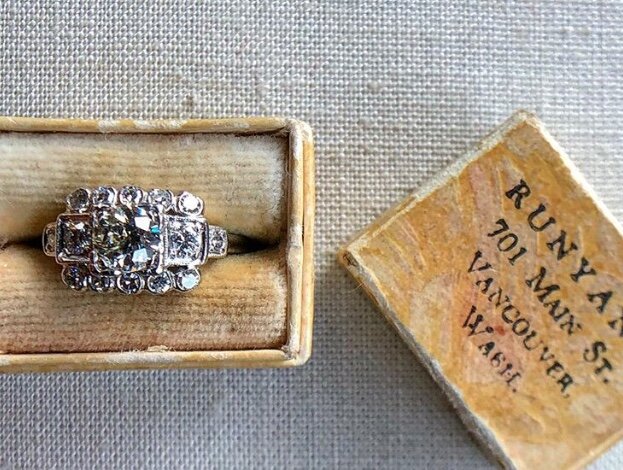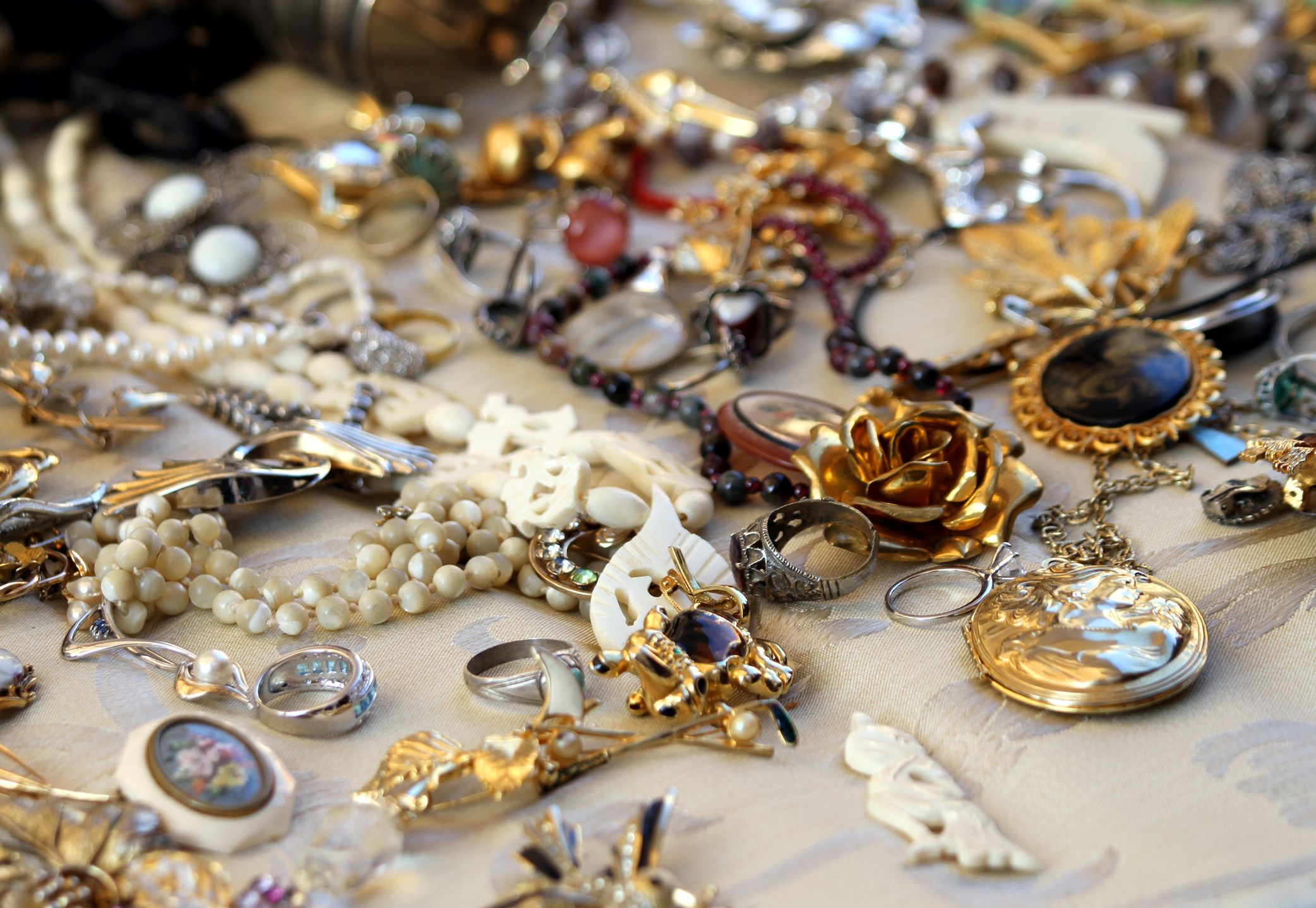Estate Jewelry: Why It’s a Great Investment for Collectors and Enthusiasts
Estate Jewelry: Why It’s a Great Investment for Collectors and Enthusiasts
Blog Article
Discover the Rich Background Behind Stunning Estate Precious Jewelry Collections
The exploration of estate jewelry collections supplies an unique window right into history, disclosing the detailed partnership in between workmanship and social evolution. What secrets might these collections still hold?
The Origins of Estate Fashion Jewelry
How did estate precious jewelry concerned embody the abundant background and creativity of lost ages? The beginnings of estate fashion jewelry can be mapped back to different periods of craftsmanship, where precious jewelry was not merely a device yet a reflection of social values, technical improvements, and artistic expressions. Each piece narrates, often connected with the lives of their previous owners, encapsulating individual stories along with historic contexts.
The term "estate precious jewelry" typically describes previously owned pieces, typically from significant ages such as Victorian, Art Nouveau, or Art Deco. These items were created with precise focus to information, showcasing the skill of craftsmens who utilized products like gold, silver, and valuable gemstones. Unlike modern fashion jewelry, estate items typically include distinct designs that highlight the looks of their time, hence acting as substantial links to the past.

Significant Layout Periods
Throughout history, several noteworthy style ages have actually dramatically affected the advancement of estate jewelry, each defined by distinctive styles, materials, and cultural contexts. The Georgian era (1714-1837) marked the start of detailed layouts, typically including nature-inspired motifs and using products like gold, silver, and gemstones embeded in fancy setups. Following this, the Victorian age (1837-1901) presented enchanting themes, with sentimental precious jewelry and ingenious techniques such as making use of enamel and cameos.
The Art Nouveau period (1890-1910) celebrated organic forms and the elegance of nature, utilizing materials like opals and pearls in moving layouts. This was succeeded by the Art Deco period (1920-1939), which embraced geometric patterns, strong shades, and luxurious materials such as platinum and diamonds, reflecting the modernist spirit of the moment.
The Mid-Century Modern period (1940-1960) showcased structured styles and using unconventional materials, highlighting minimalism and functionality. Each of these eras not only reflects the artistic movements of their time yet additionally envelops the societal values and technical improvements that formed precious jewelry style, making them a fascinating topic for chroniclers and collection agencies alike.

Famous Estate Fashion Jewelry Collections
The abundant history of estate jewelry is perfectly exhibited by numerous popular collections that showcase the artistry and workmanship from various layout eras. Among one of the most renowned is the Cartier Collection, which mirrors the high-end and advancement of the renowned French jewelry expert. Parts from this collection frequently feature intricate layouts and elegant gems, highlighting the brand's commitment to fine workmanship.
An additional notable collection is the Lady of Windsor's fashion jewelry collection, which comprises numerous distinct items, including the legendary "Windsor" bracelet. This collection not only exhibits the style of the Art Deco duration however also brings an abundant narrative of love and loss, as it belonged to Wallis Simpson, that famously married Edward VIII.
The collection of the late actress Elizabeth Taylor likewise stands out in the world of estate precious jewelry. With countless pieces created by prominent jewelry experts like Bulgari and Cartier, her collection personifies beauty and sophistication, highlighting her individual design and affinity for distinct gems.
These popular estate fashion jewelry collections function as a testament to the enduring appeal of great precious jewelry, offering insight into the imaginative and cultural motions that shaped their production.
The Cultural Importance
Estate jewelry collections hold extensive social value, showing not just the visual values of their corresponding periods yet also the social and historic contexts in which they were produced. Each piece commonly personifies the craftsmanship and imaginative fads of its time, showcasing the evolution of blog here style and modern technology in fashion jewelry production.
Moreover, these collections function as tangible links to social customs and rituals. Wedding event bands and heirloom breastpins might signify love and familial bonds, while pieces embellished with specific gemstones can stand for cultural or regional identifications. The materials used-- whether gold, silver, or valuable stones-- usually inform stories of trade, expedition, and the wealth build-up of societies.
In addition, estate precious jewelry can function as historic artefacts, giving understandings into the lives of individuals and the social standards they navigated. The method fashion jewelry was worn and valued can disclose much regarding sex duties, status, and personal expression within differing social landscapes. Thus, estate jewelry transcends plain decoration, serving as an abundant narrative of human experience, virtuosity, and social heritage, inviting contemporary audiences to engage with the past in a significant way.
Caring for Your Estate Pieces
Taking care of estate jewelry pieces calls for a thoughtful strategy to guarantee their long life and protect their unique characteristics. To keep the elegance of these treasures, it is necessary to manage them with treatment. Always tidy estate fashion jewelry utilizing a soft, lint-free fabric after each wear to remove oils and dust. For much deeper cleaning, use a mild soap option and a soft brush, making sure to prevent harsh chemicals that may damage delicate products.
Storage is equally important; store items independently in a fabric-lined box to avoid entangling and damaging. Consider making use of anti-tarnish pouches or towels for silver items, as this helps to decrease the staining procedure. Additionally, stay clear of revealing precious jewelry to excessive dampness, severe temperature levels, or straight sunlight, which can adversely affect gems and metals.
Normal evaluations are essential. Look for loosened rocks, worn clasps, or harmed settings, and look for expert repairs when needed. Consulting a jewelry expert experienced in vintage or antique pieces can offer customized treatment choices. By implementing these practices, enthusiasts can preserve their estate jewelry's visual and historic value, making sure these items remain to be valued for generations to find.
Verdict
To conclude, the exploration of estate jewelry collections discloses a tapestry of artistic expression and cultural relevance, showing the worths and looks of different historical periods. Each item functions as a testament to exceptional workmanship and the narratives of those that as soon as had them. Understanding the beginnings, layout periods, and noteworthy collections enhances appreciation for these artifacts, highlighting their duty in protecting cultural heritage and encouraging continued stewardship and care for these impressive treasures.
The expedition of estate precious jewelry collections uses an one-of-a-kind window into background, revealing the detailed relationship between craftsmanship and social evolution. The origins of estate fashion jewelry can be mapped back to various periods of craftsmanship, where fashion jewelry was not just a device yet a representation of social values, technological innovations, and imaginative expressions.The term "estate precious jewelry" usually refers to used items, often from substantial periods such as Victorian, Art Nouveau, or Art Deco.The rich background of estate precious jewelry is perfectly exhibited by numerous prominent collections that display the content virtuosity and a fantastic read craftsmanship from numerous layout eras.In conclusion, the expedition of estate precious jewelry collections discloses a tapestry of creative expression and cultural value, reflecting the values and aesthetic appeals of different historical durations.
Report this page